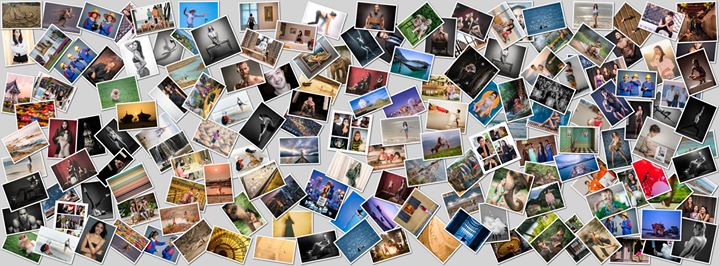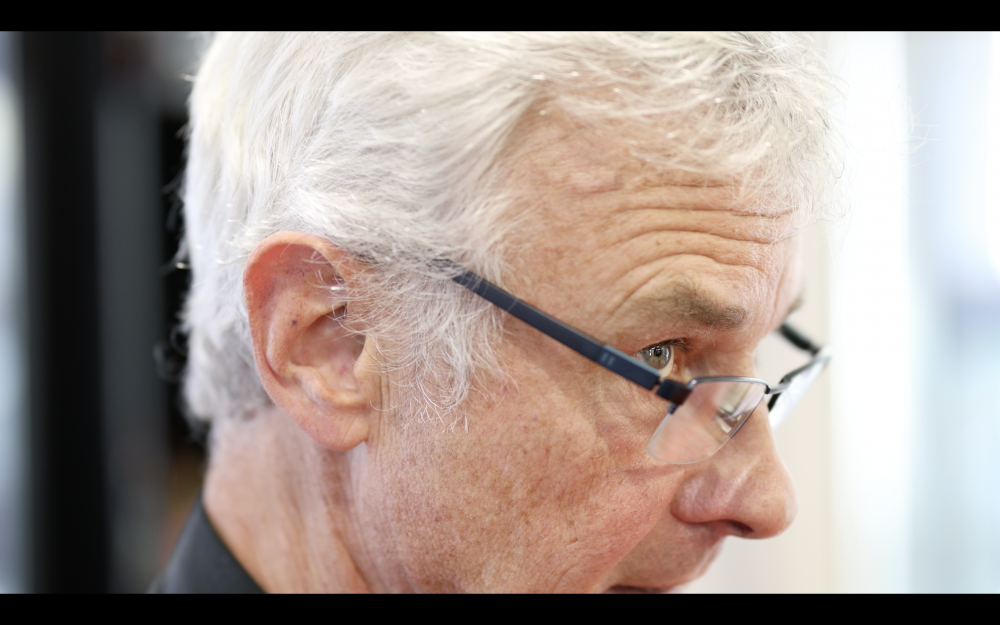-
Posts
778 -
Joined
-
Last visited
Content Type
Profiles
Forums
Articles
Posts posted by Robert Collins
-
-
44 minutes ago, thebrothersthre3 said:
Are the Sony and Z7 brighter because they are full frame?
The XT3 is pretty darn good up to 6400 iso.
Nope the reason was touched upon in Max's video. There is no hard defined definition of ISO. All camera manufacturers 'understate' their ISO. So take a look at this chart from DXOmark for the A7riii...
https://www.dxomark.com/Cameras/Sony/A7R-III---Measurements
You will see that what 'Sony' calls iso 200, is measured at iso 145 by DXOmark. Why do they do this? Well so people will say - very little noise at iso3200 - partly because the actual iso is 1600. You can go back and look at Canon 5D bodies and you will see the differential between real and Canon's iso has increased with every generation. Why? So that people can say 'at 6400 there is a half stop improvement over the old body' when it is more like a 1/4 of a stop and a 1/4 additional stop iso fudge.
When you do a comparison like Max's that uses 'same settings' - shutter speed, f stop, iso - greater amounts of 'iso fudge' end up as 'lower exposure'. As a general rule, smaller sensor cameras tend to 'fudge' their iso more than FF cameras. Take the Olympus EM1 for an example....
https://www.dxomark.com/Cameras/Olympus/OM-D-E-M1-Mark-II---Measurements
Iso stated by Olympus is iso200 while DXOmark's measured ISO is 83. So Olympus has fudged the ISO well over 1 stop and almost I stop more than the Sony.
-
39 minutes ago, TurboRat said:
Why is it that A7iii comes out on top of Max's tests while EOS R looks better than A7III in other tests lol
For lowlight, these results are pretty much as expected
The A7iii is full frame supersampled from 6k to 4k, the BMPCC is M43 (-2 stops), EOS-R FF sensor heavily cropped (-2 stops), XT-3 APSC (-1 stop) and the Z7 is high resolution sensor with pixel binning (a comparison with a Z6 would be fairer.)
- Timotheus, Mako Sports and Danyyyel
-
 2
2
-
 1
1
-
21 minutes ago, Trek of Joy said:
Is there a consensus on sharpening with the Pro2? Paul Leemimg is recommending +2 which seems counterintuitive, but he looks to be getting great results
I’m looking at one of the Mavic’s for a new gig shooting beach beauty shots. I’m leaning toward the larger sensor, but the zoom looks really convenient and those dolly zooms are not over played in tourism promos. Yet.
cheers
chris
I think the consensus is at +1 for sharpening although some people recommend 0. I would have thought it is sensible to be fairly conservative with in camera sharpening as you can always add sharpening in post but it is more problematic to take away.
- Trek of Joy and webrunner5
-
 2
2
-
Its a good question. We do know that even with usb-c you wont be able to add external storage devices to transfer files - so I am guessing the answer is no. The current ipad pro is kind of frustrating because I cant transfer video files off my Sony even with the sd card reader because the ipad doesnt like Sony's file structure
-
New Mac Minis
In: Cameras
23 minutes ago, Mako Sports said:I kind of hate of Apple bc of the "pay more for less performance" but the Mac mini does seem interesting especially if you spec it up with proper hardware need for 4K
The big question mark is graphics - intel 630 integrated is pretty feeble especially set against other specs.
-
I think a lot of this comes down to whether you see the glass half full or half empty on this issue. I am definitely towards the fan boy end.
On the 'price' I think it is pretty amazing that you can get something close to a flying RX100 for under US$2k
Quality wise there is no doubt it is a huge upgrade on the original Mavic Pro. Admittedly the original Mavic had a terrible codec with either too much default sharpening or noise reduction. 10 bit DLog-m is great to process on the Mavic 2 Pro. Of course, the FOV 4k is a little soft although I think some of the comparisons reflect excessive sharpening (rather more than detail) on other drones.
Considering that DJI has a virtual monopoly of consumer drones, it doesnt seem to be holding much back (they could have brought out the Mavic 2 zoom first and the Mavic 2 Pro 6 months later) nor are they price gouging consumers.
-
On 10/28/2018 at 2:51 AM, heart0less said:
The only unknown is the white balance on both cameras. Sean mentioned using a white card to properly set it, but this doesn't have to mean that it was set the same.
Besides, have anyone heard about this C / M / Y correlation regarding skin tones?
Talk of CMYK ratios for skin tones are pretty common amongst photo retouchers. I wouldnt say that the ratios are typically as 'rigid' as the ones he gives.
-
I agree it is easy to see us falling into a dystopian future.
Eventually Apple will be deemed liable for any copyright infringement taken and stored on an iphone. Then when you use the iphone it will scan the shot beforehand before it actually allows you to take a photo. Meanwhile, according to The Independent, the average Londoner is caught on security cameras about 300 times a day.
-
43 minutes ago, DBounce said:
I agree... Nikon are asking top dollar for the Z7... so it has to perform on all fronts... without exception.
Canon... well it’s clear they really didn’t want to make a mirrorless full frame camera. I believe this is the hidden message with the Eos R. Don’t get me wrong... if it had been flagship material I would have picked up a body or two. But in the end it left me unimpressed.
OK. Fair point about the price. I do agree that the Z7 was mispriced. Hard to see how they could justify pricing it above the D850 or A7riii. I still think it is a promising first effort though.
I do also think you are right about Canon. There is something about Canon's 'non-professional body' and 'fancy mirrorless lenses' that smells of trying to persuade you to avoid mirrorless altogether at the moment.....
...I mean who thought that producing the largest and heaviest 50m lens and 28-70 zoom was a good idea to match with the inherent advantages of a lighter and smaller mirrorless camera?
- webrunner5 and DBounce
-
 2
2
-
-
13 hours ago, kye said:
Yes, the company responsible for building the GH line of cameras, which is famous for pushing leading edge technology at this price point, couldn't possibly make a camera that has the RAW capabilities of a $1300 camera just released, for only three times the price. That is completely beyond comprehension!
Still it isnt unreasonable to think that Panasonic's 'class leading technology/specs' for video largely reflect the fact that it is using a sensor one quarter the size of FF with M43. It is quite a leap of faith to suppose that Panasonic can morph all those specs to FF. (It seems pretty clear for instance that Sony is failing/struggling to bring internal 4k 60p and 10 bit to the A7s series even with all its fancy sensor tech.)
Also it seemed pretty clear from Panasonic's presentation at Photokina that its move to FF was aimed primarily at breaching its gap in the 'stills' pro market (where M43 really isnt competitive especially going forward). Personally, I suspect that Panasonic's leading videocentric hybrid will remain the GH6/7 for at least a couple of generations and that people will happily pay a premium for its faster frame rates, greater bit depth and thicker bit rates that can be achieved by FF. The S1R was presented as the camera for 'ultimate picture creation' at their presentation - so its difficult to envision it with class video specs.
-
1 hour ago, wolf33d said:
This is the video I wanted @Andrew Reid to make. I have to say the Z7 is quite disappointing. I am also disappointed by XT3 120p cause it does not look really better than the Sony.
Personally I feel Nikon deserves a free pass. For a start the Z7 might not be the best comparison with the A7iii. Second it seems a bit much to expect a first generation product to match a 3rd generation product. I think most of the criticisms can be put down to unrealistic high expectations. Look at how far Fuji has come in a couple of generation - matching and even surpassing Sony in certain cases.
-
I thought it was interesting that Vimeo would institute a policy that seemed (at first sight) so evidently against the best interest of their customers (who clearly are looking for a reliable content provider) and therefore against the interest of Vimeo itself.
As I see it Vimeo has two problems.
1) Service providers (ie vimeo) can avoid liability under copyright infringements from their users/customers so long as they meet 'safe harbor' conditions under DMCA. A key condition is that the service provider 'must terminate' repeat copyright infringers from their system (and inform their customers of this policy.)
.thumb.jpg.f14bdef925062dc3369fc129313b6d87.jpg)
2) A secondary problem for Vimeo is its underlying business model which relies on 'subscriptions' from its users. A service provider cant really be sued for the copyright infringement of its users if it receives no monetary benefit from them (which in most cases Vimeo will.) Youtube, for instance, would seem in a better position here as it relies on advertising. So it can argue, that as it has a policy to 'demonetize' repeat offenders, it shouldnt be liable.
-
-
20 minutes ago, Glenn Thomas said:
That sucks. I wonder if you have the videos set to only appear on a specific website, and not on Vimeo, it that would still get you in trouble? I have a bunch of client music videos that could easily cause problems.
The trouble with Youtube though, is that videos played on their YouTube app (both iOS and Android), are a frame or two out of sync with the audio. It’s a joke. They play back fine in browsers though.
And as for an alternative, Flickr are good. Although I haven’t checked if they can stream 4K.
Flickr is ok but it is limited - to a maximum of 3 minutes playback and 1GB file size.
-
The main thing that strikes me about Vimeo's policy - is that it amounts to financial suicide by Vimeo.
I see the need for copyright laws but they often seem absurd to me. For instance, I dont see why it is illegal to take a photo or video of the Eiffel Tower at night.
https://petapixel.com/2017/10/14/photos-eiffel-tower-night-illegal/
-
8 hours ago, webrunner5 said:
All 12 of them left.
There used to be 4 full time Pro photographers in the city of 75,000 when I lived there for 30 years. And they were so busy years ago that I did a lot of their darkroom work for 2 of them. Now there is One, Yeah one. And he is in his 60"s now. I bet when he retires there will be None. No Olan Mills in town either. No Sears left to even shoot at.
The latest data for professional photographers in the US is here.
https://www.bls.gov/ooh/media-and-communication/photographers.htm
There are 146,000 pro photogs in the US - no small number. I seem to remember that, that number has actually increased since 2010.
However, prospects arent great. The current median income is US$32,000 - 14% below the national median wage and the BLS expects the number employed to fall 6% over the next 8 years.
-
I am sure it is only a matter of time before DJI enters the mirrorless market.
For me, I would be happy to see a product less demanding than some of the suggestions in this thread. Basically the 1 inch sensor out of the Mavic 2 on a gimbal with a smartphone interface. Hopefully with 4k/60 and 10 bit DLOG recording. Could be small light and relatively inexpensive.
-
Interesting video by Tony Northrup on sports stills shooting.
-
Hmmm.... My guess is that a consumer who wants the 'ease of use' of automatic transfer to the smartphone will also want the 'ease of use' of autofocus.
-
I actually think that Sony's goal of 'trying to exceed customers' expectations is part of the problem, Yes, they have done that in the past but it is relatively easy to do if there is no competition in your space. Once competition arrives it is a different story. It is doubly difficult to achieve in 'video' because customers expectations are built around the 'best specs available' which tends to be a Panasonic GHx - that has the advantage of a smaller sensor.
I dont really see that Sony has falllen behind though (except fo a lack of external 10 bit.) The article says '...
Nikon have got to the point where the XQD card equipped Z7 surpasses Sony on a technical level using their own technology and manufacturing facilities. It supplants Sony’s best specced stills camera....
But I dont really see it...
1. The A7riii has a much better focus system for stills. https://***URL removed***/reviews/nikon-z7-first-impressions-review/5
2. The A7riii has more dynamic range than the Z7. http://www.photonstophotos.net/Charts/PDR.htm#Canon EOS R,Nikon Z 7,Sony ILCE-7RM3
3. And even the single card XQD slot on the Z7 isnt much of an advantage as the camera write speed tops out at 245MB/s https://www.cameramemoryspeed.com/nikon-z7/fastest-xqd-card-speed-test/ and the Z7s buffer is smaller than the A7riii.
-
11 minutes ago, Andrew Reid said:
To my unscientific eye I'd put the Z7 FX around 22ms and the EOS R 1.8x crop around 35ms.
I do wonder what difference bit-depth makes to how fast a sensor can get the data off.
Bit depth certainly makes a difference to sensor readout - see here.
https://blog.kasson.com/a7riii/how-fast-silent-shutter/
He has also measured the sensor readout (silent shutter, stills) for the Z7
https://blog.kasson.com/nikon-z6-7/how-fast-is-the-z7-silent-shutter/
In fact his blog is an absolute mine of information on geeky topics related to the Z7.
-
50 minutes ago, tellure said:
@Mokara, do you notice any speed improvements when editing H264 content? I saw a mention of performance improvements on their blog last month about the next CC update. I'd sure love to be able to edit X-AVCS h264 natively and not have to make proxies for editing speed..
Performance and format support
Hardware-based encoding and decoding for H264 and HEVC provide better performance and faster rendering. Improved image processing provides more responsive playback, rendering, and Lumetri Color performance.
https://theblog.adobe.com/creative-editorial-with-faster-workflows/?trackingid=71KW6ZN6&mv=email
Actually, this morning I took the same Mavic 2 pro DLOG h.265 clip into both PP 2018 and then PP 2019 applied the same effects (lens correction, LUT and adjustments) and rendered them both out in h.264. Took exactly the same time give or take a second or two.
The new curves are very nice and intuitive in PP 2019 though.
-
I certainly get the argument that there isnt much inherently wrong with the EOS-R that you cant find a work around. I can also see the rationale - for those with a large collection of Canon lenses - to say that it is the best mirrorless option out there for them.
The problem as I see it, is that the 'shortfalls' in the EOS-R that we see seems to be indicative of a far greater 'structural' problem at Canon - I dont think they will magically disappear with the next mirrorless release. As I see it, cropped 4k, terrible rolling shutter and 120fps at 720p with no autofocus are mostly a function of the fact that both Canon's sensor tech and its processing tech is well behind the competition (and there are similar arguments for its stills.). (I dont really buy the 'avoid crippling' its Cinema argument.)
As such, it just seems an incredibly big 'ask' to try and persuade anyone who isnt incredibly entrenched in their ecosystem to invest in a brand new mount.




.thumb.jpg.bc327a4819b7c6451bfed8855aa36d16.jpg)
Vimeo alternatives
In: Cameras
Posted
Flickr may now turn into a viable alternative.
A couple of days ago the announced a revamp...
https://www.flickr.com/
...following on from the acquisition by Smugmug...
A 'pro' account is US$49 a year with unlimited uploads.
From 'early 2019' video playback will be increased from a maximum of 3 minutes to a maximum of 10 minutes....